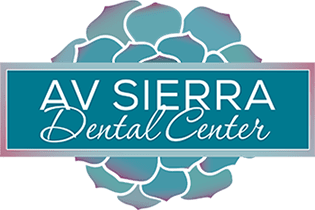E-Cigarettes and Your Oral Health: The Smokeless Threat to Your Smile
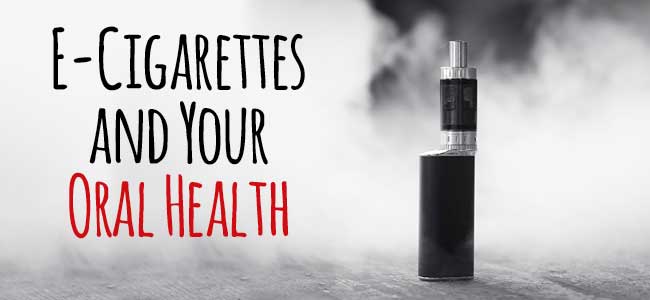
For many smokers, e-cigarettes seem like the best answer to avoiding the nasty side effects of smoking traditional cigarettes, including the odor and the staining of teeth, skin, and clothing. Though e-cigarettes still contain the highly addictive chemical nicotine, tobacco and other harmful elements are eliminated from the electronic smoking process, or what some refer to as “vaping.” The growing popularity of e-cigarettes and vaping, especially among young people, has caused a rise in concern over the lack of knowledge around the effects it has on health. While clinical studies are currently underway, in 2014 the U.S. Food and Drug Administration (FDA) released a statement saying “e-cigarettes have not been fully studied, so consumers currently don’t know the potential risks of e-cigarettes when used as intended, how much nicotine or other potentially harmful chemicals are being inhaled during use, or whether there are any benefits associated with using these products.” Vaping has a direct effect on oral health. Exposure to e-cigarette aerosol can lead to an increase of bacteria in the mouth, which is associated with gum disease, cavities, and tooth decay. The flavoring added to many e-cigarettes can also lead to cavities, not to mention an increased chance of developing chronic lung diseases. It can also cause dry mouth, inflamed gums, and other issues dentist are able to speak to how these new smoking devices threaten your oral health. Nicotine is harmful to your teeth and gums, even in the absence of tobacco and other chemicals traditionally found in cigarettes. Electronic cigarettes still deliver nicotine to their users through the mouth, throat, and lungs. The following are some of the consequences that come with using smokeless cigarettes. Gum Disease: One of the highest risks of e-cigarettes is an increased risk of gum disease coming from three specific conditions. Nicotine leads to Vasoconstriction, which is the limiting of the blood supply to the gums. When the blood supply to your gums is reduced it makes the more susceptible to infection and can lead to gum recession. Gum disease is caused by plaque bacteria. Smoking dries out your mouth, creating an environment that is more conducive for bacteria growth. Your immune system is weakened as a result of smoking, so infectious diseases can develop at a faster rate. It’s important to note that in addition to the problems caused by vasoconstriction one of the telltale signs of gum disease is swelling of the gums caused by irritation. When nicotine reduces blood flow, preventing swelling, this indication of gum disease can be masked, causing your dentist to miss the symptoms and allowing the disease to progress. Gum Recession: Lack of blood flow to the gums keeps the tissue from receiving the nutrients it needs to survive. Over time the skin dies and recedes. Bad Breath: Nicotine restricts your body’s ability to produce saliva, which makes your mouth vulnerable to harmful bacteria and tooth decay. Combined, dry mouth and bacteria lead to halitosis, which can be embarrassing and can affect your self-esteem. Intense Grinding: As a stimulant, nicotine causes muscles to tighten and spasm against the user’s will. It can cause sleep disturbances such as insomnia and grinding of the teeth. Grinding, especially while sleeping, can be damaging to teeth and result in the loss of tooth enamel, as well as chipping, cracking, and breaking of teeth. If you want to maintain your best oral health, avoiding any type of smoking is recommended. If you do choose to smoke, keeping it to the minimum and maintaining your best at-home oral hygiene practices as well as your routine visits to the dentist is important. If you see signs of periodontal disease (including red, swollen, bleeding, or receding gums) or experience bad breath, painful chewing, or loose teeth, make sure to contact your dentist immediately. There are treatments you can receive that will help keep your teeth and gums in the best possible condition. Two such treatments include: Professional dental cleanings Plaque and tartar are removed from above and below the gumline. If you have gingivitis or signs of periodontitis, you will be required to have this level of cleaning twice a year or more. Scaling and root planing Plaque and tartar are scraped away from both above and below the gumline while under local anesthetic (scaling). Rough spots on the tooth root are then smoothed out (planing). Locally applied medications, such as antimicrobials and antibiotics, may be used. If you are experiencing jaw tightness or pain, and you think you might be grinding your teeth, your provider can fit you with a mouthguard that will protect your teeth while you sleep. It can be difficult to share your habits with your dentist. At AV Sierra Dental Center, we treat our patients with respect and compassion. We are here to help you be your healthiest self. If you use e-cigarettes and are concerned about how they may be affecting your oral health, call us today and set up a consultation. We will help you protect your teeth and maintain your natural smile.
How do oral piercings affect oral health?

A Healthy Smile Is Your Best Accessory Body piercings have become increasingly prevalent over the past decade, and with more and more celebrities like Victoria Beckham, Tyrese, and Christina Aguilera sporting them, they are only gaining popularity among people of all ages. While piercings offer people the opportunity to express their individuality and add some extra bling to their personal style, some of the most popular piercings are located in the mouth area, which can be problematic. Do oral piercings damage teeth? Oral piercing can hurt your teeth and gums. It’s already easy enough to damage your teeth from day to day activities like chewing ice or trauma from sports. Complicate things with a piece of metal jewelry you just make it more likely to crack an incisor. In addition to an increased chance of injury an oral piercing can irritate your gums. Even without trauma having a stainless steel ball rubbing along your teeth can lead to enamel damage, scratches, and tooth sensitivity. If you’ve had any dental work done—including fillings or crowns—oral piercings can damage these as well, so if you don’t want to spend more money and time in the dental chair having your dental work repaired, we recommend choosing a non-oral piercing—if you’ve really got the urge to pierce something Popular face and mouth piercings include those in the tongue, lip, and cheek areas. The following are just some of the health risks and side effects associated with these piercings. Infection: Your mouth is home to a large number of bacteria that breed in moist environments. This is the perfect environment for an infection to occur. When an infection occurs in your mouth, it can become life threatening if not treated immediately. Excessive bleeding: On occasion a blood vessel gets punctured during the piercing process and results in prolonged bleeding. If not dealt with properly, severe blood loss can cause complications. Damaged gums and teeth: People with mouth piercings often develop the habit of playing with them, which may include biting and twirling them around the mouth. This can lead to scratched, cracked, and broken teeth and fillings. It can also damage the gum line. Allergic reactions: Sometimes people may unknowingly be hypersensitive to metals and can experience an allergic reaction. Nerve damage: Numbness at the site of the piercing is common. However, in some cases it remains a permanent condition due to nerve damage. Excessive saliva: Heavy salivation can result from wearing jewelry in your mouth. This can cause complications with your ability to chew and swallow correctly. It can also interfere with the pronunciation of words. If you do decide to get a face or mouth piercing, or if your child or adolescent has one, be prepared for four to six weeks of healing time. The following are some tips that will help you maintain your oral health should you decide to keep or get a mouth piercing: Make sure to keep the piercing site clean after you eat. Clear away any food particles by using mouthwash after each meal. Remove all jewelry when participating in sports, and ask the dentist about getting a mouthguard for protection. If you notice that you are developing habits that include biting or clicking your piercing against your teeth, stop immediately or consider removing the jewelry. If you think you may have an infection or might be developing an allergic reaction to the metal in your mouth jewelry, remove it immediately and call your doctor. The ADA advises against getting body modification to the mouth and considers these as invasive procedures with negative health benefits that outweigh the cosmetic effect on a person. How do you protect your teeth with oral piercings? If you already have piercings or decide that you want to get one there are ways to help protect and preserve your oral health. Keep the area clean – Be aware of food debris that can support harmful bacteria and pay extra attention to cleaning around the piercing or modification to prevent infection. Avoid rubbing your jewelry on your teeth – by preventing the metal parts of the jewelry from common in contact with your teeth you can prevent enamel damage. You should also pay attention the jewelry while speaking and eating to prevent accidents. Be extra mindful of oral hygiene – Brush your teeth twice each day, floss, use an oral rinse around the piercing and visit your dentist every six months to ensure that the piercing isn’t causing damage. Choosing to get a facial or oral piercing is an aesthetic decision that impacts your oral and whole health. Your at-home oral hygiene routine will be more important than ever should you choose to get one, as will your routine visits to the dentist and your dental cleanings. Make sure to let our provider know if you have an oral or mouth piercing so that he can help create a dental plan that will protect and maintain your best oral health. To find out more about mouth piercings, your oral health, and how we can help protect your teeth and gums, give your Palmdale dentist a call at 661.202.3542 today.
Four Foods That Can Damage Your Teeth
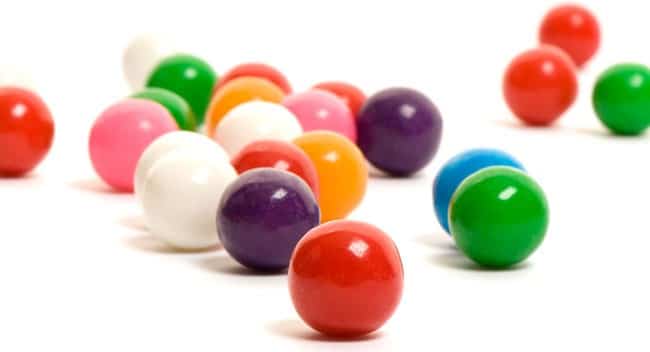
Last month, we looked at foods and drinks that can stain your teeth, but whiteness isn’t the only measure of healthy teeth. There are lots of foods that can chip your teeth or damage dental work in your mouth when you eat them. What are some of these problem foods? Your [LOCATION] dentist can warn you about some of the biggest culprits when it comes to chipped teeth, loose fillings, and broken crowns. Ice On a hot summer day, it’s great to fill a tall glass with ice and pour in some soda, lemonade, or tea to help cool down. You’re right if you assume that sugary drinks are bad for your teeth (they are!), but they’re bad in an over-the-long-term kind of way. In fact, lemonade and soda are also quite acidic, which isn’t good for your tooth enamel, either. However, it’s the ice that can actually chip your teeth if you chew it. Other hard foods can damage your teeth, too, so be careful when you’re eating things like baguettes, hard pretzels, and biscotti. Popcorn Lots of people enjoy buttered popcorn while sitting in a cool, air-conditioned movie theater, but unpopped kernels can definitely ruin the fun. They’re hard enough to chip a tooth if you crunch down on one of them by accident or on purpose. However, popcorn actually poses a double threat. The thin shell that covers the kernel can actually get stuck between your teeth or between your tooth and gum, giving bacteria a source of food and promoting tooth decay. Fruits with pits What do olives, cherries, dates, and peaches all have in common? They all have pits, of course, and those pits can damage teeth. If you accidentally bite into a pit, you can definitely crack or loosen a crown—or damage regular tooth enamel. Candy Pretty much every type of candy can damage your teeth. Hard candies can chip teeth if you bite on them or chew them up; if you suck on them and let them dissolve slowly, you’re basically giving your teeth (and the bacteria in your mouth) a sugar bath. Chewy candies, like caramels or taffy, can stick to your teeth, increasing the risk of cavities, or stick to fillings and crowns, loosening them. But sour candies are probably the most damaging of all because they combine three dangers to your teeth all in one. They’re loaded with sugar and they stick to your teeth, but the sour flavor actually comes from acids, which eat away at tooth enamel. You’re probably noticing a theme by now. Hard foods can damage your teeth. We’re not trying to you away from enjoying the sorts of treats you love. However, if you’re eating something that could chip your teeth, pay attention while you’re eating it. If you’re eating something that could damage your teeth in another way, remember to drink some water to rinse out sugars and acids. And always brush your teeth and floss after you’ve eaten any of the foods on this list. If you’ve damaged a tooth or lost a filling because of something you ate, give your Palmdale dentist a call at 661.202.3542 to make an emergency appointment. Come on in, and we can get your damaged tooth fixed right away!
Use Your Dental Benefits Before the Ball Drops

The weather is finally turning, and you only have a couple of months left to get the most out of your yearly dental insurance. Visiting the dentist may not be on your annual to-do list, but it is key to maintaining optimal oral health. With the holidays — and all of those treats and sweets — on the horizon, now is the perfect time to prepare and protect your pearly whites so you can enjoy the celebratory season that lies ahead. Why Wait? Along with dental benefits, FSA (Flexible Spending Account) and HSA (Health Saving Account) benefits expire at the end of the year. If you haven’t met your yearly maximum, the remaining amount likely won’t roll over into the next year, and you’ll lose your opportunity to make the most of those dollars. Also, if your insurance plan includes a deductible you’ve already met, it only makes sense to reap the full value of your insurance now, before the next plan year, when you have to meet the deductible again. Benefiting From Your Benefits Taking advantage of your unused benefits could save you hundreds of dollars. Routine dental exams can prevent oral conditions that are costly to correct. There is also a good chance the cost of your dental insurance will increase in the new year. Remember, you’re paying for your insurance, so getting the most out of it at its current price just makes sense. What Can I Use My Benefits For? If you are not experiencing an oral health emergency, a preventive approach to your oral health will save you money and discomfort down the road. Scheduling a regular visit with your dentist gives them an opportunity to protect and fortify your teeth against any health threats. They can also identify early signs of decay or emerging periodontal disease. When caught in the early stages, the effects of both of these conditions can be stopped and, in some cases, reversed. Consider These Treatments If you don’t need extensive work, consider using your remaining insurance benefits for the following: Cleanings Fluoride treatments Sealants Periodontics To find out more about how you can get the most out of your dental insurance plan, call 661.202.3542 today and talk to one of our professionals. We will help you figure out how you can maximize your oral health and maintain your beautiful smile.
Protect Your Teeth: Preventive Steps Toward Better Oral Health
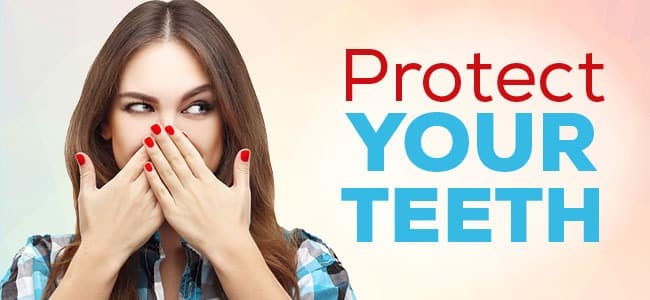
Taking preventive measures to protect your teeth from decay is essential for maintaining your natural smile. While prevention includes maintaining good at-home oral hygiene practices and making it to your routine dental visits, there are additional steps you can take to help keep your teeth healthy, strong, and safeguarded against the harmful bacteria that leads to decay and cavities. Some of the following preventive measures are commonly associated with protective treatments appropriate for children, but they can be just as beneficial for adult teeth. The next time you pop in for your regular exam, take some time to ask the doctor about whether they are right for you. Sealants Brushing and flossing cleans most of your teeth surfaces, but getting to all of the crevices — especially those located in the back molars and premolars — is difficult. Those tiny dips and pits are perfect for trapping food and bacteria, which often results in the formation of cavities. Dental sealants provide a protective coating that keeps these areas free from food debris. They are made from a resin material that is used to coat the chewing surfaces of the back teeth. It is painted on and seals the nooks and crannies in the teeth, so that food and other plaque-causing materials that cause cavities are kept out. The procedure for applying sealants is simple, painless, fast, and takes only one visit. First the decay is removed from your teeth, and they are thoroughly cleaned and dried. Next the sealant material is painted on the chewing surface. It will naturally bond to the tooth on its own; however, a special light may be used to speed the process, helping the sealant to harden in just a couple of minutes. Fluoride Treatments Fluoride is a naturally occurring mineral that can be found in both food and water. It aids in the prevention of tooth decay and cavities by making teeth resistant to the acids created by plaque and sugars. Fluoride is deposited on tooth enamel when you eat foods and beverages that contain it; it is lost when the acids produced by plaque and sugars eat away at the enamel of a tooth. Tooth decay occurs when the amount of fluoride lost outweighs what is being deposited. Most often fluoride and its use in dental treatments is associated with children and the strengthening of their young, vulnerable teeth. Although fluoride is important for young children, it is also beneficial for adolescents and adults of all ages. In fact, new research indicates that fluoride’s role in fighting tooth decay as we age is just as important as its role in the strengthening and protection of newly developing teeth. A fluoride treatment involves applying fluoride topically to teeth. The in-office fluoride treatment is quick and painless, and it involves applying fluoride in the form of varnish, gel, or foam directly onto the teeth. This can be accomplished by wearing a mouthguard filled with the foam or gel or by having varnish painted directly onto your teeth. Hygiene Services In addition to sealants and fluoride treatments, there are two important hygiene services that can improve your chances of avoiding decay, cavities, and tooth loss. Periodontal treatment: This treatment prevents the progression of periodontal disease and returns teeth and gums to a healthy state. Professional teeth cleanings: Having your teeth cleaned regularly helps prevent gingivitis, tooth decay, and loss of enamel from teeth. Some of the services included during your regular cleaning include: A review of your dental and medical history An oral cancer screening An evaluation of your overall oral health X-rays to detect decay Removal of stains, plaque, and tartar Polishing of all teeth At-home oral health education and instruction Keeping your natural smile for a lifetime is possible when protective measures are taken and the proper dental care is received. Your oral health is our top priority, and making sure your teeth stay healthy and beautiful is our mission. Call us today to find out more about how we can help protect your smile against decay.
